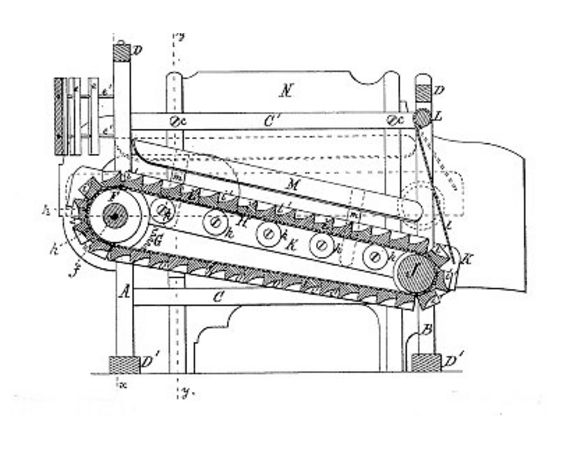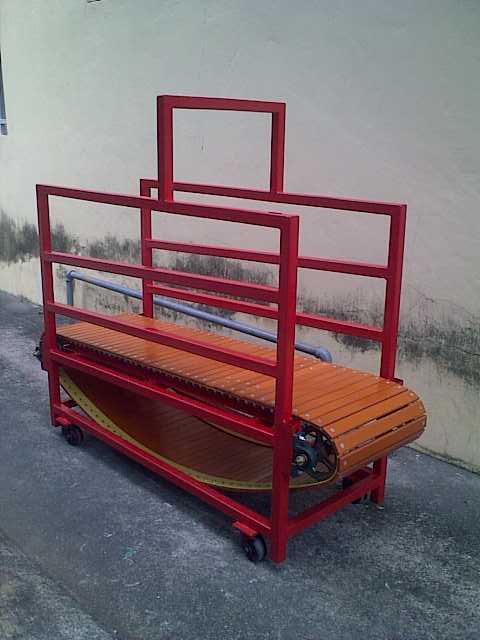ยินดีต้อนรับครับ
ขอแนะนำให้ทุกท่าน สมัครสมาชิก เพื่อป้องกันการแอบอ้างชื่อครับ
หมวด
- หัวข้อทั้งหมด36,995
- General Issues กระทู้ทั่วไป27,550
- All Gangster กลุ่ม ชมรม คอก ฟาร์ม87
- กฎระเบียบ การขึ้นทะเบียนสุนัข ABC9
- Dog for Sale ตลาดซื้อขาย7,857
- Products & Service สินค้าและบริการ407
- ผลิตภัณฑ์/อาหารสุนัข26
- Activities กิจกรรม138
- Knowledge สาระ880
- Hit Questions/ คำถามยอดฮิต10
- สมาชิกใหม่อยากให้อ่าน !!31
Mark Mafia
-
เทคนิคการให้อาหารสุนัข
74
-
พิตบูลกำลังจะกลายเป็นหมาจร !!
96
-
เปิดตัว เดอะ เฮอร์ริเคน ดุ๊ก
34
-
ก่อนลงขาย ขอความร่วมมือจากส...
213
-
เปิดตัว เดอะ เรด กราม ล๊อค
199
-
ช่วยแนะนำหน่อยคะ... เจ้าหมา...
49
-
มือใหม่อยากให้อ่าน
64
-
เล่นบอร์ดนี้ ให้มีความสุข
60
-
Welcome to Pitbull Cafe'
1118
-
ทำไมถึงต้อง พิตบูล
47
-
Pitbullzone Radio สถานีวิทย...
59
-
เปิดตัว The Red Warrior Dae...
79
-
ผลิตภัณฑ์สร้างกล้ามเนื้อ "พ...
527
-
คำคม วลีเด็ด มาร์ค มาเฟีย
49
-
ประสบการณ์จริงของการเลี้ยงห...
105
-
มาร์ค มาเฟีย อยากบอก !!!
81
-
รวมคลิป ฝึกหมาจาก PitbullZo...
43
-
Gramlock , the first time o...
195
-
ถึงมือใหม่ทุกท่าน ด้วยความป...
105
-
นโยบาย ปี2555 ของเว็บ Pitbu...
62
-
เป็นไปได้ไหม ???
165
-
ความแตกต่างของเอฟวันแต่ละรุ่น
79
-
เรียนมาเพื่อแจ้งให้ทราบ
41
-
กองทุน Pitbullzone (ABC)
43
-
ชะตาฟ้าหรือจะสู้มานะตน
133
-
รักหมาจริงหรือว่ารักตัวเองก...
128
-
สินค้าที่ระลึก Pitbullzone
9
-
ประวัติพิทบูล นักสู้ตลอดกาล...
96
-
ลงรูปครับ(สำหรับคนไม่รู้)
6
-
French-Bulldog กิน F1 ได้มั...
78
-
Proudly to present The Stro...
64
ลู่วิ่งราคาถูกไม่เกิน 9000 ใครสนบ้าง
-
ผมจะทำลู่วิ่งราคาถูกไม่เกิน 9000 บาท ใครสนใจบ้างคับ
จากการที่ผมศึกษาราคามันแรงไปนิดคับ อยากทำของถูกๆๆ
ให้พี่น้องใช้บ้าง อาจจะถูกกว่านี้
ถ้าได้ของถูกคับ <กำลังศึกษารางลากอยู่คับ>
ก้อเลยมาขอความคิดเห็นคับ
ยินดีทุกความคิดเห็น -
ยินดีทุกคำแนะนำคับ
-
อยู่เพชรใช่ไม๊คับเผื่อไปอุดหนุน555
-
คับ อยู่วัดพระรูป
-
ผมให้ได้แต่กำลังใจคับเพราะไม่มีความรู้เรื่องพวกนี้เลย สูู้ๆ^^คับ อย่ามองแค่ถูกอย่างเดียวนะคับ ต้องสร้างของที่มีคุณภาพออกมาด้วยนะคับ^^
-
ได้คุณภาพแน่นอนคับ ผมพอที่จะมีที่ซื้อของราคาส่งคับ แต่ของดี
-
ยินดีล่วงหน้ากับเถ้าแก่ใหม่ครับ
-
ถ้าทำออกมาเสร็จแล้ว ก็เอาตัวอย่างมาให้ชมด้วยนะครับ ผมสนใจอยู่พอดี
-
สนใจเช่นกันครับ
-
ยินดีทุกคำแนะนำคับ [-O<
-
น่าสนใจมากเลยครับ :-D
-
น่าสนครับ
-
สนับสนุนครับ.... :062:
-
ผมเห็นด้วยคับ ถ้าวัสดุที่ทำได้มาตราฐานและมีความคงทนเท่าๆกับของแพง
-
ผมเห็นด้วยครับราคานี้ที่รับได้ครับ ที่ขายอยู่มันแรงไป ไหนจะค่าส่งอีก เพราะราคาไม่ได้ร่วมค่าส่ง
-
ผลงานออกแล้วจะนำมาเสนอนะคับ
-
ทำออกมาเป็นตัวอย่างสักตัว หากคุณภาพถึงขายได้แน่นอนครับ
รางลากทำเอาไว้ซ้อมไม่ซีเรียส แต่ถ้าจะให้ได้มาตรฐานควรใช้เหล็กหนาหน่อยครับ จะได้ใช้แข่งได้ด้วย เหล็กบางมันอ่อน ไม่นานก็พังครับ -
สนใจครับ :063:
-
ขอบคุณคับ สำหรับคำติชมคับ ^:)^
-
สนใจอย่างแร็งครับ
-
สนใจครับ...สนับสนุนครับ
-
=D> :o037:
-
คุณparjak เป็นความหวังของพวกเราเหล่ารากหญ้า :m15:
-
ผมไม่ซื้อได้เปล่าครับ พี่อู๋ แต่จะไปใช้ฟรีครับ คนบ้านดียวกัน
-
ทำไมคุณaun001ja002 เห็นแก่ตัวยังงี้ละคับ
ของ ไม่ใช่ถูกๆนะคับ
จะเล่นใช้ฟรีคนเดียวได้ไง
แบ่งผมใช้ฟรีด้วยคนสิค๊าบบบบบบบบบบบบ
คนบ้านเดียวกานนนนนนน
ไว้มีปัญญาซื้อจะไปอุดหนุนนะคับ -
ได้ซิคับ คอเดียวกันทั้งนั้น :-D
-
ใครพอมีความรู้กันลู้วิ่งชี้แนะด้วยคับ
ยินดีน้อมทุกคำแนะนำ ^:)^
ขอบคุณสำหรับเจ้าของพืนที่ด้วยคับ พี่ Mafia -
ทำมาเลยค่ะ ต้องการเป็นอย่างมาก เอาไว้ยามท้องแก่ พาไปออกกำลังกายไม่ไหว ต้องมีตัวช่วยหน่อย555
-
เจ๋งครับพี่^^
-
อันนี้ผม พูดเล่น นะพี่อู๋ ผมอั๋นที่บ้านอยู่พี่เลี้ยงครับ
-
อยากเห็นแบบร่างของเครื่องวิ่งและรวมถึงรายละเอียดของอุปกรณ์ ราคาเป็นปัยจัยหนึ่งเท่านั้น แต่ขนาดของลู่วิ่ง การปรับความลาดชัน ความสูง เพลา สายพาน ลูกปืน วัสดุพื้น กันตกหน้าตกหลัง ขนาดเหล็กโครง เสียง ความไหลลื่น พวกนี้เป็นปัจจัยที่มีผลต่อราคาเครื่อง ถ้าทำออกมาดี อุปกรณ์มีมาตรฐาน
ขายได้แน่นอน -
สนใจครับ ลงชื่อ 1 คน
-
สนใจครับ
:) -
ถ้าราคาอยู่ที่ระหว่าง 8000-9000 จะน่าสนมากครับ รีบทำนะครับ อยากเห็นของจริง ผมเป็นคนนึงที่จะอุดหนุนพี่ครับ
-
ไม่น่าจะเกินสิ้นเดือนนี้คับออกมาแน่คับ
-
How to Design a Treadmill for Dogs
By Lisa Parris, eHow Contributor , last updated October 07, 2011
How to Design a Treadmill for Dogs
Historically, a dog-powered treadmill was a popular item on a small farm. The energy generated by the dog was used to churn butter, grind stones or power a sewing machine. The heavy, wooden slat treads were designed for a dog to use at a slow, steady pace for several hours. Nowadays, dog treadmills are used to give overweight dogs a well-needed workout. For normal sized pets, treadmill running is a handy substitute for other forms of exercise when the weather, or busy schedules, don't allow for quality outdoor time. Modern treadmills are lighter than their predecessors and consist of three main parts: the frame, the rollers and the belt. The guidelines below can help you to formulate a strategy to incorporate these key elements into your dog treadmill design.
Read more: How to Design a Treadmill for Dogs | eHow.com http://www.ehow.com/how_4828550_design-treadmill-dogs.html#ixzz1xpJp9zvf
ไฟล์แนบ
article-new-intro-modal_ds-cdn-write_upload_2000_700_80_6_132786.jpg 38K -
Instructions
1
Measure your dog. You will need to ensure the treadmill design is long enough and wide enough for your dog to use comfortably.
2
Design the frame. Frames can be constructed out of wood or metal and can be made with side rails. The dog can be clipped to these rails to help keep him from falling off. Notches can be added to adjust the incline of the equipment, making the workout more challenging as the dog's performance improves. Rollers can be attached to the frame via axle and ball bearing, or using independent casings.
Sponsored Links
conveyor belt
Easy installation and maintenance low price, manufactory, inquiry now
www.conveyorbelt8.com
3
Determine what sort of roller system you'd like to use. Unless you have a very small dog, the width should be between 15 and 18 inches. Large rollers will be positioned at each end of the frame with slightly smaller rollers along the length. A simple roller can be made by filling a piece of two-inch PVC pipe with foam and running an axle thorough the center. The rollers are then covered with polyurethane plastic; forming a base which is positioned and secured within the frame.
4
Find a belt. Belts can be salvaged from old gym equipment, taking them straight from human powered machines. You'll need a piece of approximately 10 feet long, depending on the size of your dog. To simplify the process a gravity roller section can be purchased from a conveyer company or occasionally found on EBay or Craigslist. Alternatively, you could incorporate carpet into your design, rather than a standard conveyor belt.
5
Include a slip-out roller. When designing your dog treadmill, it will need to include a system for removing one or more of your rollers, in order to properly incorporate the belt. The belt will need to be fairly tight to work correctly. By slipping several of the rollers out one side, and sliding the belt into position, the belt can be pulled taut when the rollers are replaced.
6
Consider your options. A variety of materials could be incorporated into the design. A dog treadmill could be created from wrapping a belt of flexible material around spools or old wagon wheels, using sturdy wooden slats instead of rollers. Rails could be replaced by gates, or ignored entirely.
7
Modify a human treadmill to suit your dog if the above seems too taxing. Used gym equipment can be found in the classified ads, at thrift stores, and in yard sales for a fraction of their original price.
Sponsored Links
Thailand Supplementswww.phukethealthshop.com
Sports Supplements Thailand USA Brands. Free EMS Shipping
Ask a Vet Online NowPet.JustAnswer.com
A Veterinarian Will Answer You Now! Questions Answered Every 9 Seconds.
Ball Rollerswww.omnitrack.co.uk
Original UK Ball Transfer Unit Manufacturer Since 1954
Assembly Automationwww.magnemotion.com
QuickStick Linear Motor Conveyor Fast, Accurate, Programmable
Read more: How to Design a Treadmill for Dogs | eHow.com http://www.ehow.com/how_4828550_design-treadmill-dogs.html#ixzz1xpKCfPpe -
เดี๋ยวผมว่างจะมาช่วยหาขอมูลเพิ่มเติมคับ
-
ขอขอบคุณสำหรับคำแนะนำคับ
ยินดีทุกคำติชมคับ ^:)^ ^:)^ -
ผมก็ทำให้ตัวที่บ้านใช้เองครับยินดีให้คำปรึกษาและข้อมูลครับไฟล์แนบ

120420121529.jpg 53K 
120420121527.jpg 30K 
130420121535.jpg 45K -
รีบทำนะคับ ระวังคนขายอยู่แล้วจะลดราคาตัดหน้าก่อน :m01:
-
ไม่เป็นไรคับ ถ้าเป็นผลดีกับทุกคน ผมก้อดีใจคับ
-
คุณ kohkaa
ผมอยากถามหน่อย ไม้ระนาดใช้ไม้อะไร
แล้วความหย่อนของตัวลู่ หย่อนมาก น้อยดีกว่ากัน
ขอขอบคุณทุกท่านที่แนะนำคับ ^:)^
ปล. ถ้าสะดวก ขอเบอร์ด้วยคับ จะได้ขอคำปรึกษา -
ทั่วไปก็ใช้ไม้เต็งกันครับส่วนของผมใช้Bakelite หย่อนมากดีกว่าครับ
เบอร์โทร 080-8255344 โก๋ -
เอาใจช่วยครับ
-
เสร็จบ้างรึยังครับ อยากเห็น
-
พี่ทำเสร็จบอกด้วยนะอยากได้อันหนึ่ง
-
ทิ้งเบอร์ไว้คับ แล้วจะโทรบอก ไม่น่าจะเกินสิ้นเดือนนี้คับ
:m40: -
เบอร์ผมครับ 0813756249
-
สนับสนุนครับพี่... ลองดูเเบบที่พี่ทำก่อน
ผมก็มีเเบบอยู่นะครับ บอกขนาดทุกส่วน บอกอุปกรณ์ เเต่ขอไปค้นก่อนครับ...
มีเเบบอยู่ เเต่ผมไม่มีปัญญาทำ เเล้วก็ยังไม่มีทุน..55+ -
คุณkohkaa แผ่น Bakelite ราคาแพงไหมครับ ขายยังไง พอดีทำไว้แล้วหลายปีแต่ยังไม่เคยให้วิ่ง เพราะกลัวไม้ระแนงหัก(ไม้เก่า) เลยอยากเปลี่ยนอะครับ จะได้ใช้ซักที :X















